Aconcagua Gear List
Four Bags, Six Stages, One Expedition
This expedition is logistics-heavy. The best way to have a comfortable, smooth trip is to understand ahead of time how you’ll pack and move your gear around Argentina. You need four different types of luggage for this trip:
- Expedition Backpack – big, comfortable, and ready to hold all of your gear on the upper mountain.
- Expedition Duffel Bag – the biggest, burliest duffel available. Think 150-liters in size.
- Trekking Backpack – 30-40 liters, enough to carry light snacks, layers, and water.
- Small Duffel – carry-on luggage of any kind that isn’t hard-sided nor wheeled.
How do these four kinds of luggage work together? Read below to understand the trip flow through all six stages of the expedition.
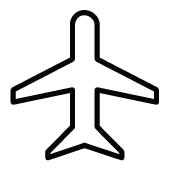 Stage 1 – Travel to Argentina
Stage 1 – Travel to Argentina
Pack everything (except for a few items mentioned below) into your expedition duffel and check it in with your airline. Your expedition pack and trekking pack should be flat-packed inside of the duffel bag.
Pack your small duffel as your carry-on, being sure to include any usual comfort items for international air travel. Staying relaxed in the days prior to your expedition will contribute to your success on Aconcagua! Pro tip: we typically fly with our high-altitude boots and our insulated pants in our carry-on baggage. These items are nearly impossible to replace in Mendoza, while other gear list items can be found in local shops.
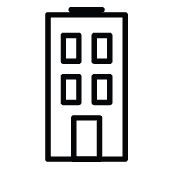 Stage 2 – Trip Prep in Mendoza
Stage 2 – Trip Prep in Mendoza
You’ve arrived to beautiful, sunny, Mendoza! Here, we take the time to do a thorough gear check, among other pre-trip duties. For those staying extra days on the front or back end of the expedition, don’t forget to pack some warm-weather clothes. Climbing season often brings temperatures of 100°F to Mendoza and the surrounding countryside, although it can be easy to forget this if you are traveling from a Northern Hemisphere location where snow is falling!
After our gear check, we’ll pack as outlined below:
- Small duffel – in this duffel, which is left in Penitentes, pack a set (or two) of town clothes and perhaps a small bottle of a favorite shampoo. Any other “nice” items you will want immediately after exiting Aconcagua Provincial Park should be packed into this duffel.
- Trekking pack – your “day 1” trekking clothes and footwear go in this bag, along with your water bottles, trekking poles, hydration mixes for your water bottles, some extra snacks, camera, and a few layers sufficient for an all-day trek. Your guides will assess the weather forecast and give specific coaching.
- We flat-pack our expedition backpack into the bottom of our expedition duffel along with every other expedition item. Anything that goes in this duffel will soon be inaccessible during each day’s travels, so consider carefully anything you pack into it.
- Any valuables or other luggage can be stored with the Park Hyatt (or your hotel) – we do not recommend bringing laptops beyond Mendoza, for example. If you plan to store large amounts of gear or clothing at the hotel during the expedition, you may wish to bring a fifth bag/duffel for this purpose.
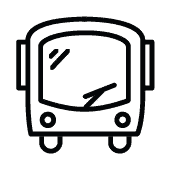 Stage 3 – Penitentes
Stage 3 – Penitentes
A few hours from Mendoza by bus is a tiny mountain town called Penitentes. We drop our expedition duffels with the arrieros (mule drivers), and do not have access to them again until we arrive at camp the following night.
After weighing our duffels, we check into a small hotel with only the items packed into our trekking pack and small duffel remaining. There’s no retrieving items from your expedition duffel at this point – be sure to pack your prescriptions, contact lenses, and phone charger in other luggage!
 Stage 4 – Trekking to Base Camp
Stage 4 – Trekking to Base Camp
After a night in Penitentes, we check our small duffels into hotel storage, bus to the trailhead, and begin trekking to base camp. Until we reach camp for the night, the only equipment with us what we packed into our trekking pack.
Whether climbing via the Vacas Valley or Normal Route, once we reach camp each day we will be reunited with our full expedition duffel and the remainder of our gear. Each morning, we zip up and turn our duffel over to the arrieros. Note that Aconcagua can be dusty and that mules are not kind to equipment. Pick a heavy-duty expedition duffel!
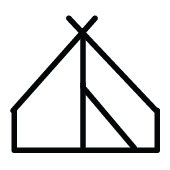 Stage 5 – Base Camp
Stage 5 – Base Camp
After a few days’ trek, we reach base camp, a remarkable mini tent-city. The experience is similar in many ways to Everest’s base camp, albeit at a slightly lower altitude. At base camp, we have constant access to our expedition duffels, and begin to acclimatize for the upper mountain.
Here, we begin using our expedition packs to cache gear at Camp I. After a few nights, we pack our packs, and prep to leave our expedition duffels behind while we live out of backpacks on the upper mountain. These duffels are stored at camp for us, or ported around the mountain for those climbing via the Vacas Valley, which is completed as a traverse from Plaza Argentina base camp to Plaza de Mulas base camp.
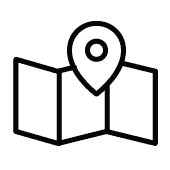 Stage 6 – Upper Mountain
Stage 6 – Upper Mountain
On the upper mountain, only our expedition backpacks and gear contained within them remain. All of our other luggage, like bread crumbs, traces our journeys all the way back to Mendoza.
Weather and conditions permitting, after celebrating summit success, we descend to base camp where we regain our expedition duffels. Our packing process is reversed on our exit, all the way back to the city of Mendoza.
Excellent!!! Food great, guides couldn´t ask for anything better, no complaints at all, only great recommendations!